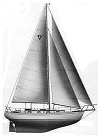
Just a Phase?
I received a charming letter from Gene, admin for theCarversite.com. This site is basically an equipment resource for all things Phase Linear/ Carver Corp/ Sunfire. They also do the Carverfest. They truly celebrate Bob Carver and the equipment produced by companies he started.
At first I thought – some of my friends have pristine samples and unusual prototypes and this might be a good way for them to find someone to truly love and appreciate their old equipment. (I still think that!) I then realized it was also a good opportunity to give a shout out to those companies and to share more of the story with the people that fall in love with the equipment. From my experiences and audio history research I find these companies to be even cooler than they seem from their products.
There are a lot of people between a visionary’s sharp idea and a functioning, out the door product. Sharp ideas take months to prototype, design, and document. Each company had an Engineering Department. Each company had solid, working engineers, designers, drafters. Several people share patents with Bob. The Engineering Departments were responsible for helping to capture Bob’s ideas and make them real, safe, and reproducible. Schematics had to be generated, a parts list with vendors, the circuit board laid out. And the mechanical design – chassis drawings, face panel layouts – lots of skill, lots of talented people.
Let’s not forget the factories! From Purchasing, through Receiving/Stores, Supervisors, Assemblers, and QC Techs into Packaging and Shipping, Admin, Sales, and Service – there were a lot of people that really cared about these companies and the products they were making. And Carver had onsite daycare in the ’80s!
The early Phase Linear, Carver, and Sunfire equipment was built in the USA, hand built by people that actually cared. And rocked! It was not unusual for one guy in a band to get a gig and then bring his buddies in. It’s the Pacific Northwest, with a band in every garage. Guys gotta eat!
Phase Linear had one of the first solder pots in the Northwest in our industry, inspiring Greg Mackie ( Tapco, Audio Control, Mackie) to invest in one, too. People involved with Phase in the old days ended up enriching the audio world by starting or flowing into other companies: Tapco, Audio Control, Spectro Acoustics, Rane, Symetrix, Magnolia, and more.
All three companies, gone now, still have employee events. Think about that! People get together and enjoy the friendships forged in those early days. I have been to several gatherings and I have had a great time every time. The times were special, but the people were, too. And still are, which is why I have such a good time!
If a lot of old equipment seems magical, I don’t doubt it. There are enormous amounts of talent, care, dedication, friendship, and rockin’ good times in there.
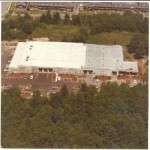
Phase Linear Building. Original size built in 1974 can be seen as the grey roof on the right. The expansion was done winter 1976-1977. Phase moved out end of 1982. Carver Corp moved in around 1986. Courtesy Nissen Collection
Pressing Details – CBS Records
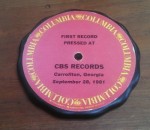 My best early tour of the CBS Records plant was conducted by my friend Brad Pirch. He took me into every department and described what the engineering issues were in each place, how the process used to work and what was currently being done to improve. He conveyed the same attitude as the Engineers from HQ: the plant is a wonderland of problems waiting to be solved. They shaved off minutes and pennies, which led to the high productivity and lower labor required in each successive plant. Brad had both scope and detail in his explanations. I begged Brad for memories about his 40 years as an engineer with CBS Records and he responded brilliantly. Enjoy!
My best early tour of the CBS Records plant was conducted by my friend Brad Pirch. He took me into every department and described what the engineering issues were in each place, how the process used to work and what was currently being done to improve. He conveyed the same attitude as the Engineers from HQ: the plant is a wonderland of problems waiting to be solved. They shaved off minutes and pennies, which led to the high productivity and lower labor required in each successive plant. Brad had both scope and detail in his explanations. I begged Brad for memories about his 40 years as an engineer with CBS Records and he responded brilliantly. Enjoy!History of Muzak
My first experience with Muzak was in an elevator in Seattle. My mother had just remarked, “Now this is music!” while we listened to an instrumental of a Beatles song I was yelled at for listening to 2 days earlier. I didn’t appreciate Muzak until I started calling on them as a commercial rep in Seattle, and even then I had no idea of the accomplishments of the founder, George Owen Squier. In the course of researching audio history I was turned on to a well-researched history of Muzak (Thanks, Dean!) History of Muzak by Peter Blecha with excellent exhibits from the Nissen Collection. Peter wrote “Sonic Boom” which I gave a rave review. The Muzak article intrigued me and I delved into old articles to learn more.
The story begins with George Owen Squier (1865-1934.) Mr. Squier was a Major-General and Chief Signal Officer in the US Army. The July 14, 1919 issue of Scientific America introduces Mr. Squier and shows details of his patent to use living trees as antennae. All the details can be seen at Rex Research. To use a tree for an antenna, simply drive a nail 2/3 of the way up the tree, attach wire, and connect wire to receiver. Check this out, it is charming. British Patent Specification # 149,917 Improvements in & Relating to Radio Communication Systems. (more…)
A Record Record Plant: CBS Records History
 In 1983 I had the honor of working in what was then the largest record plant in the world.
In 1983 I had the honor of working in what was then the largest record plant in the world.
The actual claim is that the CBS Records plant in Carrollton, GA was “the largest recorded-music manufacturing plant in the world.” This plant was awesome. We did everything – mastering, record pressing, printing, tape coating, injection molding, high-speed tape duplication, cassette assembly, packing, shipping, and record club fulfillment. (We also pressed video discs with injection-molded carriers, and no, I don’t want to talk about it. Yet.) Train cars of chemicals and vinyl pellets pulled up to what I was told were sixteen acres under one roof, although I haven’t verified that 700,000-square- ft estimate. People in the industry called us the Death Star.
Before the CBS record plant in Carrollton, GA was built four years before, (more…)
William Shatner in Audio History?
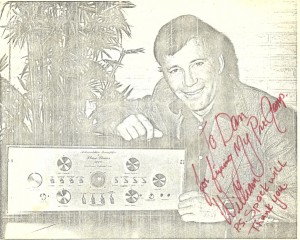 The closest I have ever gotten to William Shatner was at a trade show. Someone who worked for him bought me a cab ride and promised to put it on his expense account so I could truthfully say “William Shatner bought me a cab ride.” (And yes, I have a communicator pin.)
The closest I have ever gotten to William Shatner was at a trade show. Someone who worked for him bought me a cab ride and promised to put it on his expense account so I could truthfully say “William Shatner bought me a cab ride.” (And yes, I have a communicator pin.)
Doesn’t hold a candle to the awesome personal thank you from William Shatner to Dan Kiefer from the Phase Linear Service Department. Color me impressed (and maybe a teeny bit jealous.) My latest connection to Shatner? We both owned the same preamp. Thank you to Dean Nissen for picture and info.
1965 Seattle Audio Stores Banding Together
 This was a great find: a group of Seattle audio stores banding together to promote stereo and component systems. When you chart the existence of each store, it puts the date of this group from 1965-1968. It looks like component audio needed some help in gaining acceptance from the whole family.
This was a great find: a group of Seattle audio stores banding together to promote stereo and component systems. When you chart the existence of each store, it puts the date of this group from 1965-1968. It looks like component audio needed some help in gaining acceptance from the whole family.
“FIDELITY? Faithfulness! A Banker to his Depositors…….a Sailor’s Wife when he’s at Sea……..and in a Stereo System, in reproducing sound exactly as in the ORIGINAL PERFORMANCE!
HIGH FIDELITY? Meaningless! “high” obviously means considerably less than completely faithful and is unacceptable in a Banker, a Wife, or a Stereo System.”
Maybe I should feel weird about being compared to a Stereo System, but in our line of work isn’t that a compliment?
Here are the stores that belonged to Stereo Dealers, Inc.:
Electricraft, Inc. 1408 Sixth Ave
Hamlin’s Audio Workshop 2128 Third Ave
Hess Recorder Co’s Stereo Center 620 SW 152nd
High Fidelity Headquarters 4741 University Way NE
Lafayette Radio Electronics 1210 First Ave
Magnolia Camera & Hi Fi 2231 32nd W
Pacific Electronics Sales 1209 First Ave
Seattle Radio Supply 2117 Second Ave
Seattle Stereo Center 2440 1st Ave S
I would love to hear from you. Do you recognize this brochure? Did you work in one of these stores? Drop me a line! Below is the rest of the brochure.
Just for fun I mapped the Stereo Dealers in this group. Watch for the upcoming Map of Retailers 1948-2000.Thank you to the Roush Collection.
Booth Babe Bother
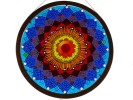 I had my first panic attack in the fall of 1977. I had just eagerly opened my booth package from the Consumer Electronics Show. It was my first CES, as well as my first time exhibiting. I ripped open the package, and in addition to the forms was a substantial little booklet – with head shots of girls my age! WTF? What could this be?
I had my first panic attack in the fall of 1977. I had just eagerly opened my booth package from the Consumer Electronics Show. It was my first CES, as well as my first time exhibiting. I ripped open the package, and in addition to the forms was a substantial little booklet – with head shots of girls my age! WTF? What could this be?
As I read the booklet and it dawned on me that you order booth babes from a catalog, panic rose with the thought – how are they going to know I’m real and not a booth babe? The babes were all just nice looking girls and could have been my friends. There’s no difference!
Breathing into a paperbag worked that time, but it just doesn’t stop. (more…)
Hamlin Audio
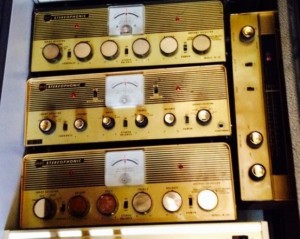 In exploring old audio history I often talk to guys that could reach into their pocket right that minute and retrieve a part from a 30-year-old product, as well as random parts from their current project. This pre-Memorial Day lunch was different.
In exploring old audio history I often talk to guys that could reach into their pocket right that minute and retrieve a part from a 30-year-old product, as well as random parts from their current project. This pre-Memorial Day lunch was different.
A guy walks into SpeakerLab (How many good stories could start like that? So many.) One thing led to another (Thanks, Ann!) and suddenly I was at lunch with a vintage-audio-component super collector named Patrick Roush. This guy can, right now, set up a dream audio stack with era-appropriate speakers and media. He has stacks of gear, carefully maintained and in working order. He has tubes, of course, and he has a tube tester. For a while I was happy just listening to his component/loudspeaker/media combinations. It was like he was painting a picture of the preferred audio stacks of my older brother and his frat brothers, each one different but choice.
Because we are completing a database of influential audio Retailers in the PNW post 1948, my ears perked up when Patrick described a stereo component built by H.H.Scott and sold under the brand name Hamlins Audio Workshop.
The owner of Hamlin’s was Philip Deming Hamlin (1917-2014). Mr. Hamlin’s electronic expertise bloomed during his five years of WWII where he excelled in Radio and Radar Research, rising from private to Major. He installed one of the the first cable TV systems in the world on Alki in 1949. He is also famous for inventing the cable converter box. He owned a factory named Hamlin International Corp and manufactured cable boxes and accessories. In the mid-fifties to mid sixties Mr. Hamlin sold stereo audio components, as well as manufacturing his own speakers and amplifiers. And that brings me back to the lunch with Patrick.
After introducing me to Hamlin’s equipment (some of it made by H.H. Scott), the conversation took a meditative turn when Patrick commented about the huge societal effect of the return of the soldiers of WWII. We also touched on Vietnam; which was a factor at the start of many of the audio industry careers we have been documenting. In addition, audio components came back to the states in great numbers as the Vietnam vets returned (Sansui, anyone?) Vets from both wars came back and changed the landscape with their new technical skills and interests, war-related advances in communication technologies, and the G.I. Bill.
 As we made our way out of Salmon Bay Cafe Patrick showed me where the cafe had added on during the 1990s. We turned to find the exit and bam! in front of us on the wall hung a 16″ disc labelled US War and Navy Departments. It was a WWII-era,old format record. I was suddenly appreciating Memorial Day in a new way. We celebrate veterans for their service, but we can also appreciate the many good things and opportunities they created when they got back. And audio industry history is everywhere.
As we made our way out of Salmon Bay Cafe Patrick showed me where the cafe had added on during the 1990s. We turned to find the exit and bam! in front of us on the wall hung a 16″ disc labelled US War and Navy Departments. It was a WWII-era,old format record. I was suddenly appreciating Memorial Day in a new way. We celebrate veterans for their service, but we can also appreciate the many good things and opportunities they created when they got back. And audio industry history is everywhere.
For more about Philip D Hamlin The Old CATV Equipment Museum
Don’t Let It Bring You Down
 There is a lot of talk lately about why women aren’t becoming engineers and scientists at a greater rate; the numbers are not appreciably different than in the 1970’s. Several studies show that both men and women have a perception of women being slightly less able in technical fields. Perception is not reality.
There is a lot of talk lately about why women aren’t becoming engineers and scientists at a greater rate; the numbers are not appreciably different than in the 1970’s. Several studies show that both men and women have a perception of women being slightly less able in technical fields. Perception is not reality.
My awesome dock neighbor was describing one of the joys of his job as a Service Department manager at a major airline. His joy is found in the outreach to community colleges and he was proud to have a couple of women under his tutelage. He described an encouragement session with one of his female mechanics, who was suffering a crisis of confidence. His gentle assurances to her made me wish everyone could have a person to explain the ups and downs of a career, and to show actual interest in the person succeeding.
In tech school guys (peers) would take the screwdriver out of my hand, literally. They were nice guys, and I believed then and believe now they were honestly just being sweet, but it got tiresome after a while.
Professors were not so sweet.
The first tech school I approached for electronics training in 1974 specifically said “We do not register young girls.” I move along.
In the next school, one guy taught remedial drafting, which I had to take because girls were not allowed to take drafting in high school. He would call me to the front of the room often and when I got there would say “Oh, nothing,” and then catcall me all the way back to my seat. Very, very embarrassing. Later the guy went hunting with his kid and was shot (he lived.) I always felt bad for not feeling worse about it.
At the university that came next, one professor had to be ordered by the Dean to stop calling the tab on a transistor package a “tit”. There were two girls in a class of two hundred guys. We sat together, and everyone looked at us every time he said it. It was embarrassing.
This particular type of rudeness was in technical classes, not humanities. The higher the ratio of men to women the less hospitable it would be.
Sexist events also happen out of school, during a career, of course. My favorite is probably when Vic Richardson, Monty Ross, and I visited Toshiba Japan while licensing Carver Sonic Holography to them for their TVs. We were taken to one of Toshiba’s automated television assembly plants, and before entry Vic and Monty were both given cloth baseball – type symbolic “safety hats.” “Not for you,” I was told. I call the caps symbolic because as soon as we got in the plant we noticed multiple layers of conveyor belts overhead with full-size TVs burning in above us, which no cloth cap could effect in any way.
The things that happen can be understandable or infuriating, may call for action, even, but the embarrassment engendered in those schools felt creepy. Made me feel like they actively didn’t want me to succeed. I haven’t felt that hateful edge since I’ve been out of school. In Japan, Vic and Monty and I laughed at the absurdity – but we all laughed together. I wasn’t being laughed at.
These memories were evoked while reading an article by Amy Blix on the history of engineering education for women. Amy’s new book is Girls Coming to Tech.
Electricraft Roots of Remarkable Audio
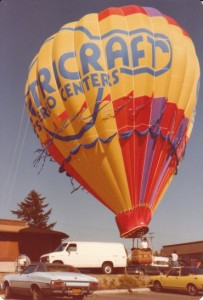 In studying the history of the audio industry in the Pacific Northwest the name Electricraft comes up a lot, whether you are talking about remarkable audio engineers, recording studios or retail stores. Like a bookstore in Berkeley or the roundtable at the Algonquin, Electricraft has all the markings of an extremely happening place in its day, with influence spreading out in time.
In studying the history of the audio industry in the Pacific Northwest the name Electricraft comes up a lot, whether you are talking about remarkable audio engineers, recording studios or retail stores. Like a bookstore in Berkeley or the roundtable at the Algonquin, Electricraft has all the markings of an extremely happening place in its day, with influence spreading out in time.
Electricraft had 8 stores and did $12M (equiv of $ 46M today) in its heyday. It was started by Oliver Runchey, Sr., and was run with help from his son Oliver Runchey, Jr., his daughter Betty Hall, and his son-in-law E.M. Ted Treanor. The formal opening was held Friday night, October 16, 1947 at their Home Appliance Headquarters at 622 Union Street. Their opening ad in the Seattle Times declared their product lines as Zenith, Emerson, Motorola Radios, and their specialty, Recording and Recording equipment.
During their Grand Opening (more…)
Prankster In Our Midst?
The more I find out about the history of the audio industry in the Pacific Northwest the more interesting it becomes. And I have the joy of a discovery totally unrelated to the topic at hand. Like this one:
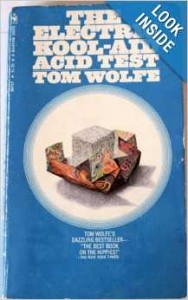 For a while in my early years I attended Clark College in Vancouver, WA. One day Ken Kesey was scheduled to speak and although I went a little early I still ended up standing at the back. Luckily it was a small room and I could see him easily. Kesey knocked me over. It was the first time in my life I experienced charisma and I was feeling it at the back of the room. What was that? I remember it like it was yesterday.
For a while in my early years I attended Clark College in Vancouver, WA. One day Ken Kesey was scheduled to speak and although I went a little early I still ended up standing at the back. Luckily it was a small room and I could see him easily. Kesey knocked me over. It was the first time in my life I experienced charisma and I was feeling it at the back of the room. What was that? I remember it like it was yesterday.
Kesey spoke about his life, his future, our future. For some reason he brought a clean-cut, handsome young blond man out of the audience and began having a one-on-one conversation with him as part of his presentation. We all wanted to be that guy. Kesey wove thoughts of freedom, creativity, personal responsibility. I had my mind opened and glimpsed possibilities never even considered until that day. Quite a memorable experience.
More than 35 years later, I am sitting on the boat with Jay Huber, quizzing him about his youth and how he found his way into the Audio Industry. I remarked that he must have attended Clark College around when I did. We confirmed dates and he offered up one of his most distinct memories: the day Ken Kesey invited him to the front of the room.
Turns out, Jay was not only invited to the front of the room – he was invited to come live at Kesey’s farm in Eugene! Jay declined being a ’70s Merry Prankster to our benefit, going on to help shape our retail landscape and product choices. Among other contributions, he co-founded several audio companies, including Croft-Huber Sound, Definitive Audio, and White-Jay Custom Audio/Cello. Jay’s story is woven through the history of audio in the PNW and beyond, so stay tuned…
Thanks, Bill
In the process of begging for photos of the old days from my friends, Bob Gudgel let me have this picture of our friend Bill Skinner. I hadn’t seen him since before a terrible motorcycle accident took his life in the mid eighties. He was a great guy and a technical mentor to many people in the audio world. He designed for companies including Phase Linear and TAPCO, where this shot was taken. (more…)
What Is That? Marine Pollution
I live on a boat in Seattle, just inside the Ballard Locks and across the channel from Fisherman’s Terminal. It is common around here to hear someone exclaim “What IS that?” and the answer can range from a heron to a beaver to the Alaska ferry from Juneau to Sitka pulling in for service. Saturday’s query was totally different. 
We awoke to a disgusting coating of what looked like mud (or worse) surrounding all the boats on the opposite side of the dock. Our slip was shining with something oily that threw rainbows. After our neighbor called and reported the mess to the Coast Guard, he was told a large boat at Fisherman’s Terminal blew a hydraulic line and they would send an environmental team. The environmental team used bags and bags of sheets that soak up oil and apparently hydraulic fluid. All areas filled with the disgusting brown mess were treated. Our side, with the oily sheen, was not. The Coast Guard also dispatched an air team to get a visual of the spread of the pollution. (more…)
Before Here, There, and Everywhere
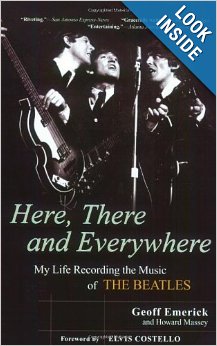 This post is a raving, all thumbs up review of Here, There, and Everywhere by Geoff Emerick with Howard Massey. This is the story of a 19-year-old EMI employee being assigned by George Martin to record the Beatles. Incredible insight into the old world of studio engineering as it breaks through its own stuffiness and yields to new technology, new sounds, and new ways of looking at sounds. They learned how to produce and use sounds artistically – while having to fight white lab coats and suits to be able to do it!
This post is a raving, all thumbs up review of Here, There, and Everywhere by Geoff Emerick with Howard Massey. This is the story of a 19-year-old EMI employee being assigned by George Martin to record the Beatles. Incredible insight into the old world of studio engineering as it breaks through its own stuffiness and yields to new technology, new sounds, and new ways of looking at sounds. They learned how to produce and use sounds artistically – while having to fight white lab coats and suits to be able to do it!
Geoff tells cool, problem-solving stories. One early story describes how he tries to satisfy each band member’s dream of their sound. He explains that Paul would ask for specific things, like more timpani, where John would want to sound like “the Dali Lama on top of a mountain,” and Geoff’s job was to fulfill these dreams. (John’s dream was realized with a Hammond and a Leslie.)
The descriptions of how recording used to work at what would become Abbey Road Studios, and how trying to serve the artist forced changes in the conservative company and its recording methods is fascinating, and the author has a calm, technical viewpoint that made the book easily devour-able and I was sad that it ended. If you love recording, companies in transition, the Beatles – you will love this book.
Christmas Past
I can’t even attempt to name everyone here, for obvious reasons, but clearly Audio Control was a fun place to be in 1980. This is the Christmas card I received from them in December of that year. I’m not positive whose idea it was; I always suspected the born-to-be-famous Ron Koliha (far right, kneeling.)
Thanks to mutual friends and the urging of the parts reps (Was it Arrow, Radar Electric, Mouser? It’s a little foggy) I started buying line cords from Greg Mackie/Audio Control during the late 1970s. He and his associates were energetic, musical, and fun. And they sold me the cords at their price, even though they were buying thousands and I only needed hundreds.
So – are you in this photo?
Saturday Tube Testing
I used to think I was a modern, emancipated woman. That my choices were my own, and I was striking out into new territory with my career. Now not only is that concept dated, I am also realizing with age that I am, much more than I used to believe, a product of my upbringing. Was it inescapable?
A trip to the hardware store every Saturday to test vacuum tubes was part of the rhythm of my life. My parents had four kids,so my dad didn’t do much without a kid or four. I don’t remember which equipment we owned that had such a voracious appetite for tubes; chances are whatever it was my dad probably built it. For years we went nearly every weekend. Now I realize that was the watering hole for the HAM Operators and Popular Electronics enthusiasts, but as a child I thought it was just a Saturday errand, like the grocery store and the (you kids stay in the car!) liquor store.
I remember him building a Heathkit* meter, and for years I didn’t watch TV without holding a big mirror and suffering bouts of vertical roll as my dad lived happily behind the set he built. (more…)
Been to an Employee Reunion lately?
This was a very interesting weekend for those curious about Audio Industry History in the NW. On one coast, folks in North Carolina celebrated CarverFest . This is an annual celebration (since 2007) of all things Bob Carver: his patents, his products, his companies, and his willingness to mix and answer questions from his fans. You can check it out yourself the Carver fan site www.theCarversite.com or maybe Bob’s Facebook page.
At the same time, back on our coast, forty people came together to celebrate working at Carver Corporation during its twenty-year run. It was a Carver Corporation Employees Reunion Picnic. I had never heard of such a thing. Have you been to a reunion of a company that is no longer viable? It showed a lot of people loved working at Carver, were passionate about their jobs, and enjoyed their co-workers. I think this level of care by all employees helped make the products the long-lived things they were.
The picnic was quite fun (although I got there late and missed lots of people that I hope to see next time) – Carver alums should check out the Carver Employee Group on Facebook for word of future events!
The Employees didn’t seem to know about CarverFest, and certainly CarverFest doesn’t know much about the Employees. There are a lot of clever and triumphant stories hidden to history of techs, engineers, designers, assemblers, QC, purchasing, and products, and I believe some of these stories should be out there!
I love that we were building things, fixing things, making things happen. A small factory is a wonderful place to work; every department is important and predictable rivalries make the plant go round ( Engineers vs Sales – anyone?)
The fact that people worldwide still buy, sell, trade, and celebrate audio equipment from 1975-1995 is partly a reflection of how much went in to those products in the first place. And as this week of celebration has shown us, the pride of the internal teams live on, just like the consumers love of the gear.
First Contact
 On a dark night in October of 1976, my mother came up from Yakima to Seattle to sit with me while I packed up and left my husband. She was disappointed and nervous, and even more so when I convinced her to take one hit from the joint I was enjoying as I packed. After her hit she began looking around with paranoia, certain the cops would be knocking on the door any minute. The panic was not alleviated when a large pounding actually began on my front door. She was convinced it was the police. I opened the door to find a 6’4”, shaggy-headed stranger who asked “Did you order 12 EQ kits with no chassis from Popular Electronics?” (more…)
On a dark night in October of 1976, my mother came up from Yakima to Seattle to sit with me while I packed up and left my husband. She was disappointed and nervous, and even more so when I convinced her to take one hit from the joint I was enjoying as I packed. After her hit she began looking around with paranoia, certain the cops would be knocking on the door any minute. The panic was not alleviated when a large pounding actually began on my front door. She was convinced it was the police. I opened the door to find a 6’4”, shaggy-headed stranger who asked “Did you order 12 EQ kits with no chassis from Popular Electronics?” (more…)
Sonic Boom
Enjoy reading about the history of audio technology? I would like to recommend the following highly enjoyable read:
Sonic Boom by Peter Blecha
This book is the title of the post because it really felt like a sonic boom! If you were anywhere around the Northwest in the ’50s,’60s,’70s ’80s – this book will really take you back – and tell you things about your own time you never knew. Great research into not just the people and the companies, but the music, the usage of instruments – the author is my new hero.
In 1976 I shared a house with a guy who performed as “Hank Rasco and the Wasted Rangers.” I almost dropped the book (but would never now that it’s on my phone!). The author knew about the Wasted Rangers! Other flashbacks were set off by the memory of Heart playing the Aquarius! OMG I was right back in the Aquarius. The level of detail is remarkable, but the true beauty of this book is in the more distant past – I don’t want to give anything away, but I never knew the Northwest had a direct connection to the blues. The English may have listened to the records and evolved their style from them – but did you know the kids in Seattle not only got to see them live, but the blues musicians actually taught them things and let them play! BB King, Bobby Blue Bland and other hot artists of the day came through the area and excited and inspired musicians directly!
Respect to the author, Peter Blecha. Incredible work.
Backup & Recovery – Do one so you won’t need the other
A lovely artistic couple recently asked why the size of the backup file is so much smaller than the size of all the stuff in the machine. They logically surmised that much of it is compressed. But it’s a little trickier than that.
There are program files and data files, and “backup” means different things for each. Their natures also determine how you can move these files around your machine.
Program files Install; I think of them as plants, their roots sinking into the operating system and going every which way. They cannot be deleted; cut off the top and the root system remains; you must gently pull them out by uninstalling. Data files are more like the decorative stones here. They can easily be picked up, moved – as can the data files for documents, music, spreadsheets, photos.
And that takes us right back to the differing size of all computer files versus backup files – Backup files contain data and program settings but not the programs themselves.
You give yourself away
The rhythm of your typing may be unique enough to forgo computer passwords in the future – and maybe even to predict when you are not yourself – whether due to stress, illness or fraud (it’s not you!)
An article in NewScientist revealed some fascinating experiments by Mike Dowman and associates at the University of Abertay, UK. They ran a study of people entering the same user IDs and passwords, recording how long each key was held down and how long between each keystroke. They then developed software that could identify volunteers by their keystroke “signature” – which was successful 97% of the time! (more…)
The Cost of Spam?
If you’ve ever wondered if anyone ever tried to determine how much it costs us to deal with spam, the answer is oh, yeah. Explore what Google thinks it costs you by using their Postini services Return On Investment calculator found here: Spam Costs Calculator
Using their calculator, dealing with as few as 15 spam messages a day will cost you one full 8-hour day of productivity in a year. Multiply that per employee and spam filters become your friend.
How much do you use?
Energy, that is. I’m mostly talking about electronic energy usage, ’cause that’s what I think about, but we must put this in context: it won’t matter what state you leave your audio or PC in if your energy is flying out your under-protected windows or wasted heating the house when no one is home. Electronic usage changes create much smaller savings, but they are savings and They Add Up.
There is a cool calculator here that you can use to see approximately how much energy you use with your electronic equipment and even better, how much it costs per year. You can experiment with changing your usage and see what it might save you: http://www.mygreenelectronics.org/EnergyCalculator.aspx (more…)
Your keyboard is gross
Since it is not just flu season but swine flu, er I mean H1N1 season, thought I’d remind everyone that keyboards have often tested heavier in bacterial contamination than toilet seats.
I bring this up not to bring you down, but to encourage you to keep a pack of disinfectanl wipes handy and use them to wipe down your keyboard periodically. Always make sure your machine is off first, and don’t press too hard or rub hard on the keys if you plan on reading them later. If you’re not squeamish you can read about one of the studies here. (more…)
12,000 laptops lost weekly in US airports
Dell released a study that blew my mind. Over 12,000 laptops are lost in US airports each week! Dude, seriously. The study breaks it down: which airports, where in the airport, if the laptops get reclaimed…Dell commissioned the report from Ponemon Institute Look for >”Airport Insecurity, The Case of lost laptops” from June 2008.
Their study included 106 major US airports in 46 states. Of the 12,255 estimated laptops lost each week, only 33% are reclaimed. Over 40% of business traveller respondents didn’t have their data backed up, and 65% admit they didn’t protect or secure the data on their laptop.
That’s scary for a number of reasons when you consider what is on your laptop: client info, confidential business plans, intellectual property, employee info, financial data. Some of this information is protected by law and people whose information is compromised have to be notified. California even has a law that compels this if you do business with anyone in California.
So, next time you fly, double-check that you have your laptop after the security station (40% lost there), the departure gate (23%), restroom (9%),food court (7%), and bar (6%). And backup! Just sayin’.
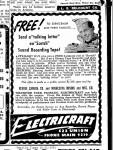

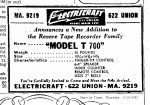

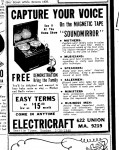


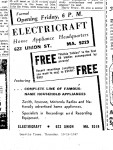
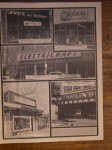
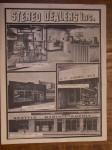
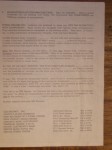
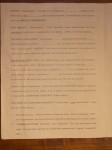
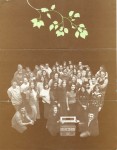
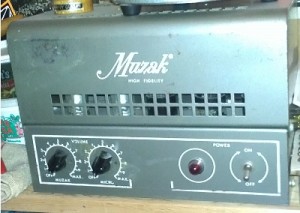
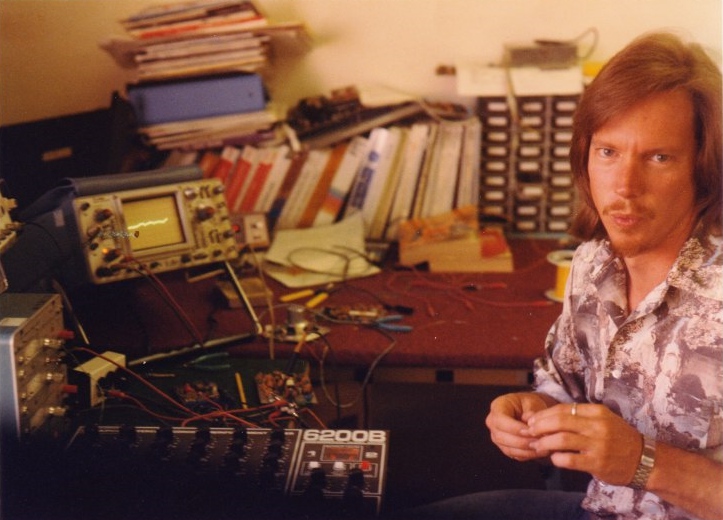

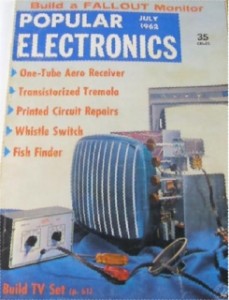
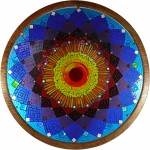

Recent Comments